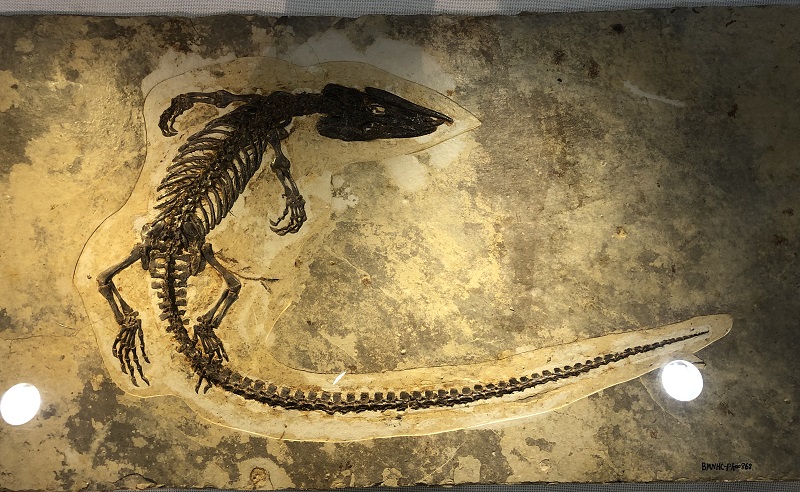BH Staff | June 1, 2023
Age and Locality: Early Cretaceous, Liaoning Province.

Monjurosuchus splendens, identified by R. Endo in the early 20th century, is a prehistoric reptile from the Early Cretaceous period, specifically from the Jehol Biota of northeastern China. Its name, Monjurosuchus, combines references to Monju (a locality in China where the first fossils were discovered) and “suchus,” derived from the Greek word for crocodile, highlighting its crocodilian features. The species name “splendens” suggests the remarkable or splendid nature of its discovery.
Monjurosuchus is not a dinosaur but falls within the group of Choristodera, a now-extinct lineage of semi-aquatic reptiles that thrived during the Mesozoic era. Choristoderes were not closely related to modern crocodilians but shared some superficial similarities in their lifestyle and morphology, such as a long, streamlined body and a lifestyle that was likely tied closely to freshwater environments.
This reptile is particularly noted for its unique cranial and postcranial anatomy, which indicates it occupied a niche similar to that of modern-day gharials or other crocodilian species, likely feeding on fish and other small aquatic or semi-aquatic creatures. Monjurosuchus had a relatively small size compared to other choristoderes, with estimates suggesting a total body length of about 1 meter (3.3 feet).
One of the most fascinating aspects of Monjurosuchus splendens and its relatives is their place in the evolutionary history of reptiles. The Jehol Biota, where Monjurosuchus fossils have been found, is renowned for its exceptional preservation of Early Cretaceous life, providing a window into a vibrant ecosystem that included early birds, feathered dinosaurs, and various other reptiles. The discovery of Monjurosuchus contributes to our understanding of the diversity of life during this period and the evolutionary history of reptiles, showcasing the wide array of ecological niches that were occupied by choristoderes.
The study of Monjurosuchus and other members of the Choristodera continues to provide valuable insights into the complexity of Mesozoic ecosystems and the evolutionary pathways that led to the modern distribution of reptilian life on Earth.
